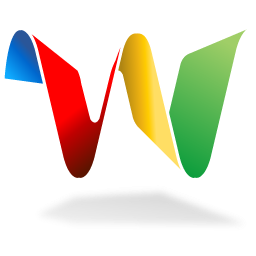 Google has released a slew of products since it rose to prominence on the tide of its self-titled search engine, including an online office suite, a social network, and two operating systems. Sometimes, though, its ideas fall flat, or are nixed by the company before they reach maturity. Today we’ll take a look at what went wrong with Wave, an early attempt at collaborative editing and communication software.
Google has released a slew of products since it rose to prominence on the tide of its self-titled search engine, including an online office suite, a social network, and two operating systems. Sometimes, though, its ideas fall flat, or are nixed by the company before they reach maturity. Today we’ll take a look at what went wrong with Wave, an early attempt at collaborative editing and communication software.
The Hype
Wave, which was announced at Google I/O 2009, was intended to update email communication for a new era. It drew inspiration from the science fiction television show Firefly, in which interstellar video messages and chats are known as “waves.”
The result was sort of a cross between instant messaging, email and a text editor. Users could edit a document at the same time, and enrich it with “gadgets” that added functionality.
In a period video promoting the project, two developers show how Wave could be used to collaboratively plan a barbecue. They create a Wave, which is addressed to the other invitees, and the video shows them editing the document at the same time, adding suggestions for food and beverages.
[youtube id=”p6pgxLaDdQw” width=”600″ height=”350″]
A Brief, Tragic Life
But once Wave was released as an invite-only service, Google struggled to communicate what it was actually useful for – other, perhaps, than planning barbecues. It wasn’t that the software was dysfunctional so much as that out of its many features, no one function was clear.
According to the rumor mill, Wave may have been a last-ditch effort to keep Lars Rasmussen on board, and in a poorly-designed effort to reward success, ended up handing out bonuses for meeting deadlines instead of delivering a tightly-conceived product. On the interface side, the lack of a notification system – well into the year’s of Facebook‘s dominance in social networking – failed to keep users coming back.
The result was a flashy but unpolished product that seemed more focused on appearances and paying lip service to a science fiction epic than with providing a useful service.
[youtube id=”u7GzApUGJ3o” width=”600″ height=”350″]
Obituary
Google announced that Wave would no longer be actively developed in summer 2010. All Waves were set to read-only in January, and the service is expected to be discontinued entirely this month.
The decision puzzled some users, with commentators pointing to the products’s poor marketing and muddy sense of purpose. A petition to preserve the project garnered only 504 signatures.
Another possibility is that the project was canceled to make room for Google+, the social network the company has been trying hard to integrate into its entire range of products since summer 2011. Google+ has some similarities to Wave, like its focus on real-time communication and, much like in Firefly, easy-to-use video chats.
There may also have been concern that Wave was stepping on the toes of Gmail, the company’s successful email service. With Gmail, which debuted way back in 2004, Google also sought to pioneer a new way of visualizing email conversations. Perhaps by setting its sights lower, Gmail paved to the way to remain successful eight years later, unlike Wave.
Postmortem
Hope springs eternal for some Google products. Wave was turned over to the Apache Foundation, which will continue to develop the software as a server application called Wave In A Box.
Image: Google






